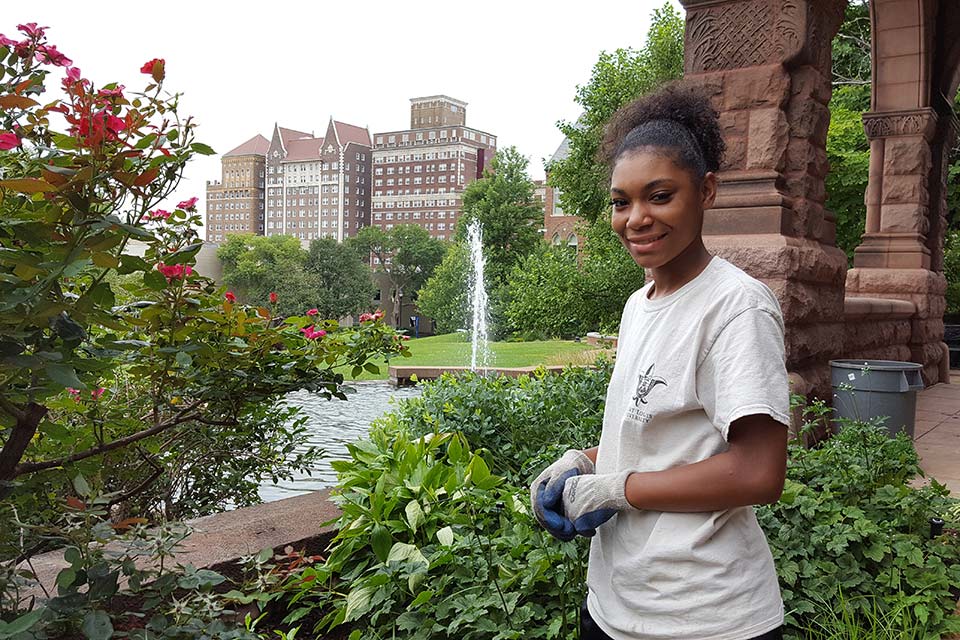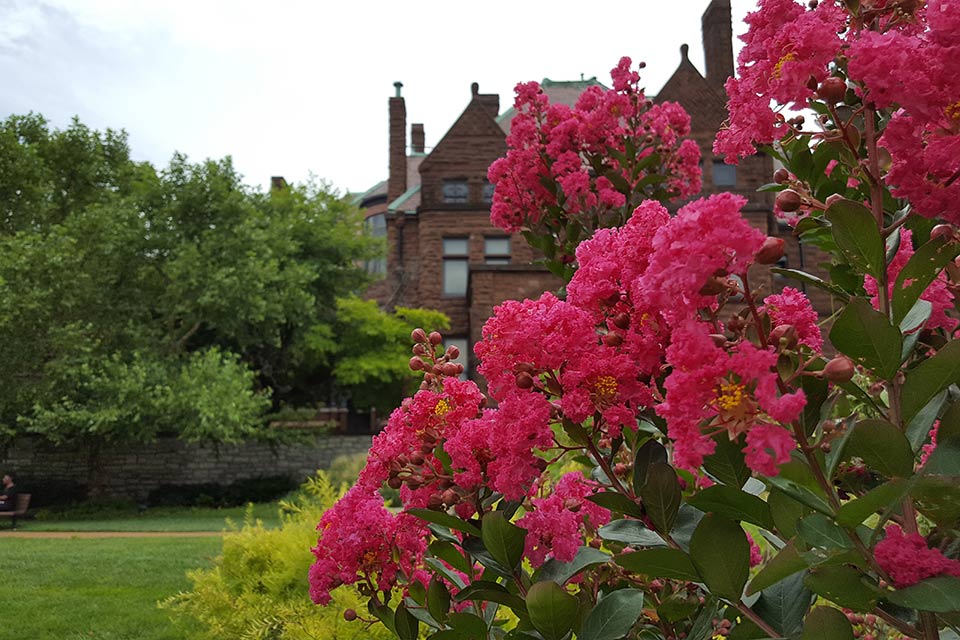Grounds Services Updates Landscaping Practices to Support Sustainability Efforts
Over the past few years, Grounds Services has consciously been planting more native and pollinator plants throughout campus, replacing some of the traditional annuals, which include tulips, mums, petunias, marigolds and begonias.
Some of the newer plants include ornamental basil, buddleia (butterfly bush), black-eyed Susans, Joe-Pye weeds, purple coneflowers and crapemyrtle, among others.
These practices support urban landscaping, which promotes biodiversity and aligns SLU with local initiatives like the Missouri Botanical Garden’s BiodiverseCity initiative and urban bee research by the University’s Damon Hall, Ph.D. (Sustainability), and Gerardo Camilo, Ph.D. (Biology).
Brandon Verhoff, director of Sustainability and Benchmarking, said that SLU students and employees may observe a bigger transformation of campus this year.
“It’s been hard to notice these plants previously – they don’t just grow overnight, but take time to fully mature, which is why we are seeing many of them flowering across campus this summer,” he said.
The effort to increase sustainable plants can be seen through the various native, pollinator or perennial plants on campus. The Milkweeds for Monarchs butterfly garden in Koenig Plaza near Monsanto Hall is one example, as is the butterfly garden in front of Cupples House.
Milkweeds for Monarchs gardens (a St. Louis City initiative), support natural habitats for monarch butterflies, a population that has declined more than 90 percent over the last two decades due to habitat loss and chemical use. Female monarchs depend on milkweeds to lay their eggs and feed their caterpillar larvae. Although other plant species can serve as nectar sources for the butterflies, the monarch caterpillars feed solely on milkweeds.
Other native and pollinator plants contribute to the urban bee population by providing needed floral resources through flowering nectar and pollen.
To support student learning and using campus as a “living laboratory,” Grounds Services and the Office of Sustainability and Benchmarking are partnering with graduate students to perform an assessment of bee pollinator plants.
“These students are working to assess campus landscaping practices by identifying our plants that support endangered and vulnerable species, like bees,” Verhoff explained. “As a result of the assessment, we are hopeful this information will help us become a certified Bee Campus.”
SLU's grounds department goes further to support the biodiversity of the campus by using an integrated pest-management policy, limiting the use of pesticides and supporting more natural fertilizers. Other sustainable landscaping practices include the landscaping waste, which is composted on campus and then re-applied in campus flower beds through a closed-loop system.
Additionally, SLU has been recognized as a certified Tree Campus every year since 2012.
To get involved in this process, members of the SLU community can join the Green Billiken Student Group on SLUgroups or email the SLUstainability staff at greenbilliken@slu.edu.

